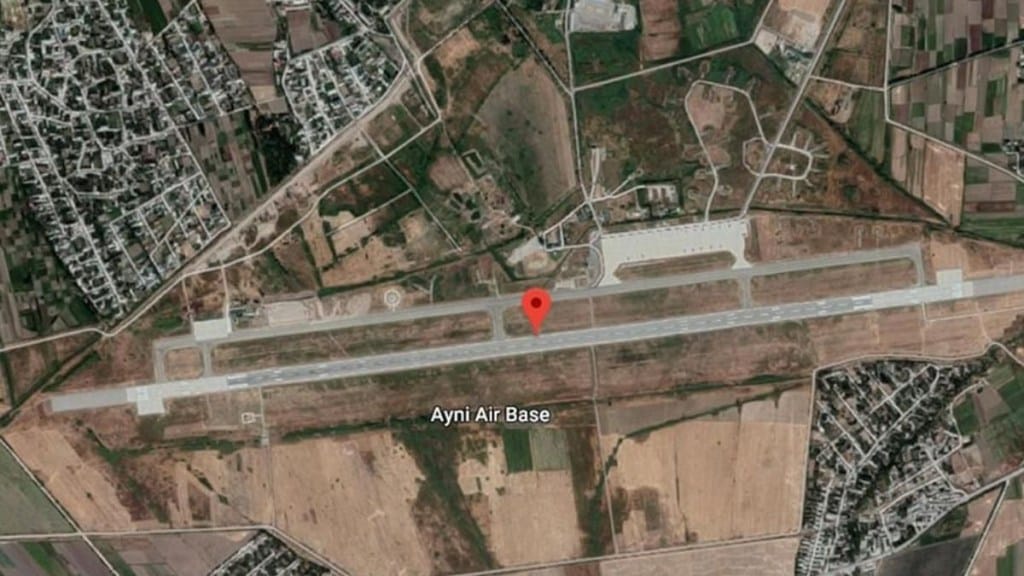By Harsh V Pant & Ayjaz Wani
India quietly ended its only overseas military presence by relinquishing the strategic Ayni airbase in Tajikistan upon the expiry of the bilateral agreement. Ayni airbase, also known as Gissar Military Aerodrome, was a former Soviet military facility that fell into disrepair after the Soviet Union’s dissolution. After 1991, Russia faced economic difficulties and struggled to pay soldiers’ salaries. Meanwhile, New Delhi, considered a trusted friend of Moscow, was permitted to develop the Ayni airbase.
Moscow supports India’s role in the security framework of Central Asia, particularly in Tajikistan, due to its vulnerable borders with Afghanistan and China as well as the influx of drugs and extremists into the region. Additionally, the 1999 Kargil War heightened New Delhi’s strategic and security interests, making Ayni airbase critical for boosting India’s deterrence and strategic depth against Pakistan.
India began developing the airbase, located 20 km from the Wakhan Corridor and bordering Pakistan-occupied Kashmir and China’s Xinjiang province, in the late 1990s. With an investment of $70 million, the Indian Air Force and Border Roads Organisation upgraded its 3,200-metre runway, air traffic control systems, and fuel depots. At one point, India also deployed Su-30MKI fighter jets and helicopters for strategic deterrence.
India also established a military hospital in Farkhor, Tajikistan, not only to treat members of the Northern Alliance, a coalition of groups that fought against the Taliban, but also to project its soft power in Central Asia’s poorest region. India also used the airbase in 2021 to evacuate Indian citizens and officials from Afghanistan after the Taliban regained control of Kabul.
Potential factors driving the exit
India’s decision to relinquish the strategic airbase appears to be influenced by Russia and China’s increasing geopolitical pressure on Tajikistan. Additionally, Ayni airbase’s logistical and intelligence support against the Taliban, mainly due to its connection with the Northern Alliance, diminished for India after the Taliban’s return to power. Moreover, relinquishing the airbase supports India’s expanding relationship with the Taliban.
But, Russia isn’t opposed to India’s growing presence in Central Asia. It has consistently supported India’s prominent regional role in countering China and endorsed India’s membership in the Shanghai Cooperation Organisation (SCO). Moscow also maintains its 201st Russian Ground Forces military base in Tajikistan near the Afghan border to counter terrorism and drug smuggling under the Collective Security Treaty Organisation, aimed at enhancing security and military cooperation with Central Asia.
Beijing’s BRI
On the other hand, Beijing, through the Belt and Road Initiative (BRI), has cemented its economic relations with Central Asia with mega investments in infrastructure and energy. China has used the SCO to expand its security footprint by setting up a military base in Tajikistan’s Murghob district and conducting regular military exercises with the Central Asian republics at bilateral and trilateral levels, building a solid base for “Pax Sinica” across Eurasia. Beijing also trains their armies and supplies military technology assistance.
In recent years, Central Asia has been increasingly attracting global actors seeking dependable sources of critical minerals and energy, primarily to reduce its dependence on China. Since 2022, Russia’s focus on Ukraine and Western sanctions have prompted Central Asian nations to adopt a multi-vector diplomatic approach aimed at regional stability, territorial integrity, and sovereignty, strengthening their ties with the European Union (EU), the US, Türkiye, China, and the Gulf states to develop new connectivity routes, such as the Middle Corridor and the Eastern Route of International North-South Transport Corridor. Even the EU has increased its engagement with the five resource-rich Central Asian nations in regional connectivity, trade, and energy. In 2024, it announced investments of roughly $10.6 billion in the Middle Corridor, followed by another $13.2 billion in 2025 in critical minerals and energy sectors. Türkiye is leveraging the Organisation of Turkic States and Pan-Turkism to build strategic partnerships, signing infrastructure projects to expand its influence in the Caucasus and Central Asia.
The recent White House summit marking the tenth anniversary of the C5+1 initiative brought together leaders from Turkmenistan, Tajikistan, Uzbekistan, Kyrgyzstan, and Kazakhstan amid China’s export curbs on key minerals and technologies. While the US policy on Central Asia has shifted from non-intervention to pragmatic engagement, it lacks strategic clarity, often limiting regional initiatives by like-minded nations including India. For instance, the US revocation of sanction waiver on India’s development of Iran’s Chabahar Port disrupted India’s connectivity projects with Central Asia. Although Washington later restored a six-month waiver, investor confidence has weakened.
Over three decades, India has deepened ties with Central Asia across military technology, defence, counterterrorism, and economic cooperation, supported by long-standing cultural links. Since 2010, Central Asian countries have also sought stronger ties with India to diversify their strategic alliances. Granting India access to the Ashgabat Agreement enabled it to enhance Eurasian connectivity and access to resources. Central Asian nations also see the Chabahar port as an opportunity to diversify export markets and counterbalance China’s influence.
Though India’s withdrawal from the Ayni airbase may limit its regional outreach, it reinforces its traditional reliance on cultural and civilisational diplomacy. As geopolitical competition intensifies in Central Asia, India will have to prioritise transparent and reliable connectivity strategies while leveraging its diplomatic and intellectual capital to strengthen its role as a trusted regional partner.
Harsh V Pant & Ayjaz Wani are respectively Vice-president, Studies and Foreign Policy, & Fellow, Eurasia, Observer Research Foundation
Disclaimer: Views expressed are personal and do not reflect the official position or policy of FinancialExpress.com. Reproducing this content without permission is prohibited.

